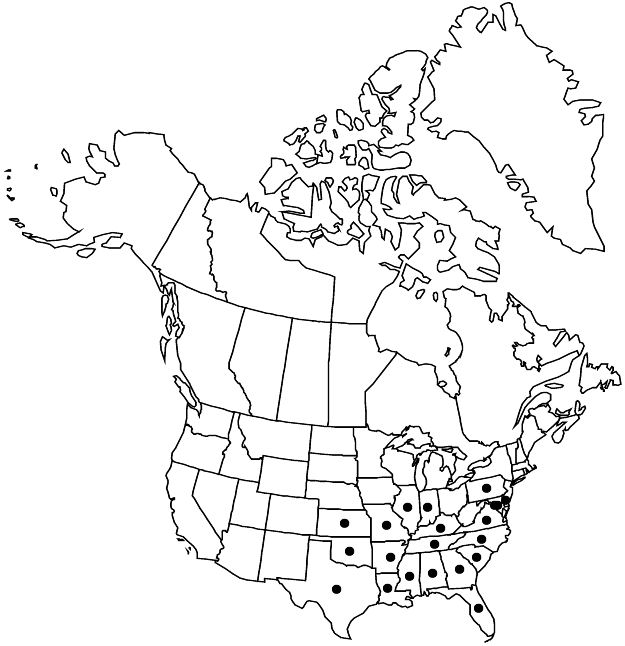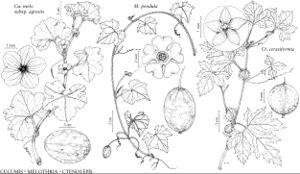Melothria pendula
Sp. Pl. 1: 35. 1753.
Leaf-blades 5–10 cm, base cordate, surfaces scabrous to hispid. Inflorescences: pistillate flowers on slender peduncles, rarely 2 from single axil. Flowers: hypanthium 1–2 mm; petals: apex emarginate to truncate. Pepos pendulous on peduncles 15–45 mm. Seeds 2–4 mm.
Phenology: Flowering (Feb–)Mar–Nov.
Habitat: Bottomland forests, riparian thickets, pine-palmetto woods, upland oak woods, marshes and swamps, hammocks, glade margins, dunes and sand flats, pond and lake edges, ditches, roadsides, thickets, fences and fencerows, disturbed areas.
Elevation: 0–200 m
Distribution

Ala., Ark., Del., D.C., Fla., Ga., Ill., Ind., Kans., Ky., La., Md., Miss., Mo., N.C., Okla., Pa., S.C., Tenn., Tex., Va., Mexico, West Indies, Central America, South America, in e Asia (Japan), Pacific Islands (Taiwan)
Discussion
Three varieties have sometimes been recognized within Melothria pendula. Variety aspera from Alabama and Florida was described by J. K. Small (1933) as distinct in its slightly smaller (12–15 mm versus 10–25 mm) and globose to subglobose (versus ellipsoid to ovoid) pepos; var. crassifolia from Florida and Georgia was described as distinct in its trailing or creeping (versus climbing) habit, leaf blades wider than long (versus longer than wide), and mottled-green pepos (versus purplish black) at maturity. There appears to be no discernible geographic pattern to any of these features; instead, the variation appears to be populational, especially in habit and pepo and leaf shape. Pepos yellowish to mottled-green at maturity (as noted on label data) have been collected over at least all of the Gulf Coast states. The ontogenetic sequence of color change might be useful in interpreting variation patterns but needs further study.
Selected References
None.
